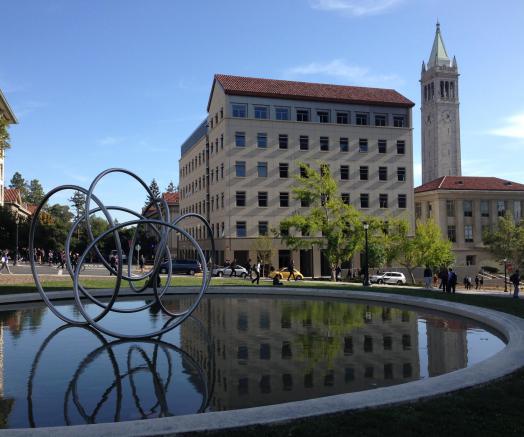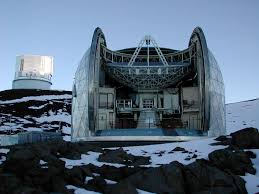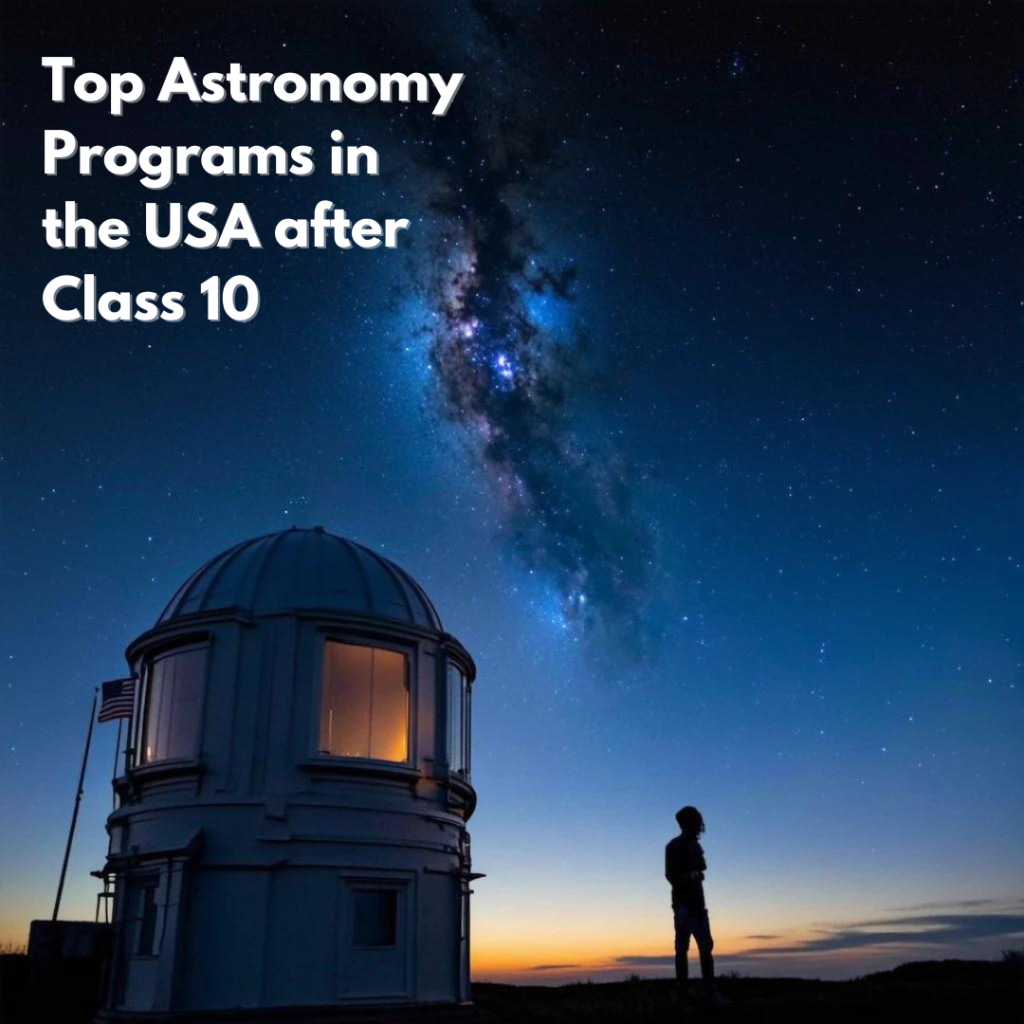Did you know that the United States is home to over 40% of the world’s most powerful telescopes? For aspiring astronomers, this statistic highlights the incredible opportunities awaiting those who choose to study astronomy in the USA after completing their 10th class. The journey to becoming an astronomer in the United States offers not just academic excellence but also unparalleled access to cutting-edge research facilities and a vibrant scientific community.
Unlocking the Universe: Besy Astronomy Programs in the USA after 10th Standard
For students dreaming of exploring the cosmos, the path to studying astronomy in the USA after 10th grade is now more accessible than ever. The Nextgen Scholars Pathway Program offers a unique 2+2 University Transfer Program, designed to make your astronomical aspirations a reality. This program provides a cost-effective route to obtaining a US student visa after 10th grade, allowing you to begin your journey in astronomy at a community college before transferring to a top university to complete your bachelor’s degree.
Whether you’re fascinated by black holes, exoplanets, or the origins of the universe, studying abroad in the USA can open doors to world-class education and research opportunities. Let’s explore how you can turn your passion for the stars into a rewarding career through the USA student permit process and the support of the Nextgen Scholars Pathway Program.
Top US Universities for Astronomy
The United States offers world-class astronomy programs at several prestigious institutions. Here are some of the top colleges for astronomy, based on program quality, research opportunities, and overall reputation:
California Institute of Technology (Caltech)
Caltech’s astronomy program is renowned for its cutting-edge research and access to world-class observatories. Students benefit from a low student-to-faculty ratio and hands-on research experiences.
| Factor | Score (out of 10) |
|---|---|
| Program Ranking | 10 |
| Cost of Study | 6 |
| Academic/Career Support | 9 |
| Work Opportunities | 8 |
| Culture/Lifestyle | 7 |
Overall Ranking: 9.2/10
Official website: www.caltech.edu
Massachusetts Institute of Technology (MIT)
MIT’s astronomy program emphasizes a strong foundation in physics and mathematics alongside specialized astronomy courses. The program offers extensive research opportunities and access to advanced telescopes.
| Factor | Score (out of 10) |
|---|---|
| Program Ranking | 9 |
| Cost of Study | 6 |
| Academic/Career Support | 9 |
| Work Opportunities | 9 |
| Culture/Lifestyle | 8 |
Overall Ranking: 8.8/10
Official website: web.mit.edu

University of California, Berkeley
UC Berkeley’s astronomy program is known for its comprehensive curriculum and strong research focus. Students have access to the Lick Observatory and collaborate on projects with NASA and other space agencies.
| Factor | Score (out of 10) |
|---|---|
| Program Ranking | 9 |
| Cost of Study | 7 |
| Academic/Career Support | 8 |
| Work Opportunities | 8 |
| Culture/Lifestyle | 9 |
Overall Ranking: 8.6/10
Official website: www.berkeley.edu (no-follow)
Highlights and Trends in Astronomy: Top Fields, Career Prospects, and Average Salaries
The field of astronomy is experiencing exciting developments and offers diverse career opportunities:
Top Fields:
- Astrophysics
- Cosmology
- Planetary Science
- Astrobiology
- Data Science in Astronomy
Career Prospects:
- Research Scientist
- Observatory Technician
- Aerospace Engineer
- Science Educator
- Data Analyst in Astronomy
Average Salaries:
- Entry-level Astronomer: $60,000 – $80,000 per year
- Mid-career Astronomer: $90,000 – $120,000 per year
- Senior Astronomer/Researcher: $120,000 – $150,000+ per year
The job outlook for astronomers is positive, with a projected growth rate of 8% from 2021 to 2031, according to the U.S. Bureau of Labor Statistics.

How much does it cost to study astronomy in us?
Astronomy program costs in the US can vary significantly based on several factors:
Influencing Factors:
- Public vs. Private Institution
- In-state vs. Out-of-state Tuition
- Financial Aid and Scholarships
- Living Expenses
Average Costs per Year:
- Tuition and Fees: $30,000 – $60,000 (₹24,00,000 – ₹48,00,000)
- Living Expenses: $12,000 – $20,000 (₹9,60,000 – ₹16,00,000)
Total Cost for 4-Year Program:
$168,000 – $320,000 (₹1,34,40,000 – ₹2,56,00,000)
Cost Savings with NextGen Scholars 2+2 Pathway Program:
By completing the first two years at a community college through the NextGen Scholars Pathway Program, students can significantly reduce their overall costs:
- Estimated Savings: $40,000 – $80,000 (₹32,00,000 – ₹64,00,000)
This approach allows students to complete their degree at a top university while substantially reducing the financial burden.
Choosing the Right Institution for Astronomy
Selecting the ideal astronomy program is crucial for your academic and career success in the United States. Consider these influencing factors:
- Research opportunities and facilities
- Faculty expertise and reputation
- Curriculum depth and specialization options
- Internship and job placement rates
- Location and access to space observatories
Right Counseling from Nextgen Scholars:
Nextgen Scholars provides personalized guidance to help you navigate these factors and find the best-fit astronomy program. Our experienced counselors assess your academic profile, career goals, and personal preferences to recommend institutions that align with your aspirations.
Studying Astronomy in the US after 10th Class
Requirements:
- Completion of 10th grade with strong grades in mathematics and science
- English proficiency (TOEFL, IELTS, or Duolingo scores)
- Standardized test scores (SAT or ACT)
- Extracurricular activities related to astronomy or science
NextgenScholars Pathway Program Details:
Our program offers a structured path to studying astronomy in the US:
- 3-15 months of Intensive English (if needed)
- 2 years at a community college for an Associate Degree
- 2 years at a top university to complete a Bachelor’s Degree
2+2 University Transfer Program: Benefits and Cost Savings
- Save up to 50% on tuition for the first two years
- Smaller class sizes and personalized attention at community college
- Seamless transfer to top universities for degree completion
- Total estimated savings: $40,000 – $80,000
Pathway after 10th Standard:
- Enroll in Nextgen Scholars Pathway Program
- Complete Intensive English course (if required)
- Begin Associate Degree at partnered community college
- Transfer to a top university for final two years
- Graduate with a Bachelor’s Degree in Astronomy
Process After 12th Standard:
For students who have completed 12th standard:
- Apply directly to US universities
- Submit required documents (transcripts, test scores, essays)
- Secure admission and funding
- Apply for F1 student visa
- Prepare for departure to the US
How Nextgen Scholars Pathway Program Helps
Career Counseling:
Our expert counselors provide guidance on astronomy career paths, helping you align your studies with your professional goals.
Application Assistance:
We support you throughout the application process, from selecting schools to crafting compelling personal statements.
Visa Support:
Our team offers comprehensive assistance with F1 visa applications, increasing your chances of approval.
Interview Preparation:
We conduct mock interviews to prepare you for university and visa interviews, boosting your confidence.
Document Guidance:
We help you compile and organize all necessary documents for applications and visa processes.
Ready to start your astronomy journey in the US? Contact Nextgen Scholars today for a free consultation and take the first step towards your dream career in the stars!
FAQs
Q: What are the average fees for studying astronomy in the US?
A: Annual tuition ranges from $30,000 to $60,000, with total costs including living expenses between $42,000 to $80,000 per year.
Q: What housing options are available for international students?
A: Options include on-campus dormitories, off-campus apartments, and homestays. Many universities guarantee housing for first-year students.
Q: What are the F1 visa requirements for studying astronomy in the US?
A: Key requirements include acceptance to a SEVP-approved school, proof of sufficient funds, strong ties to your home country, and English proficiency.
Q: What exams are required for admission to astronomy programs?
A: Typically, you’ll need to take the SAT or ACT. Some programs may also require SAT Subject Tests in Mathematics and Physics.
Q: What are the language test requirements for astronomy programs?
A: Most universities accept TOEFL (minimum score of 80-100), IELTS (minimum score of 6.5-7.0), or Duolingo English Test (minimum score of 105-120).

